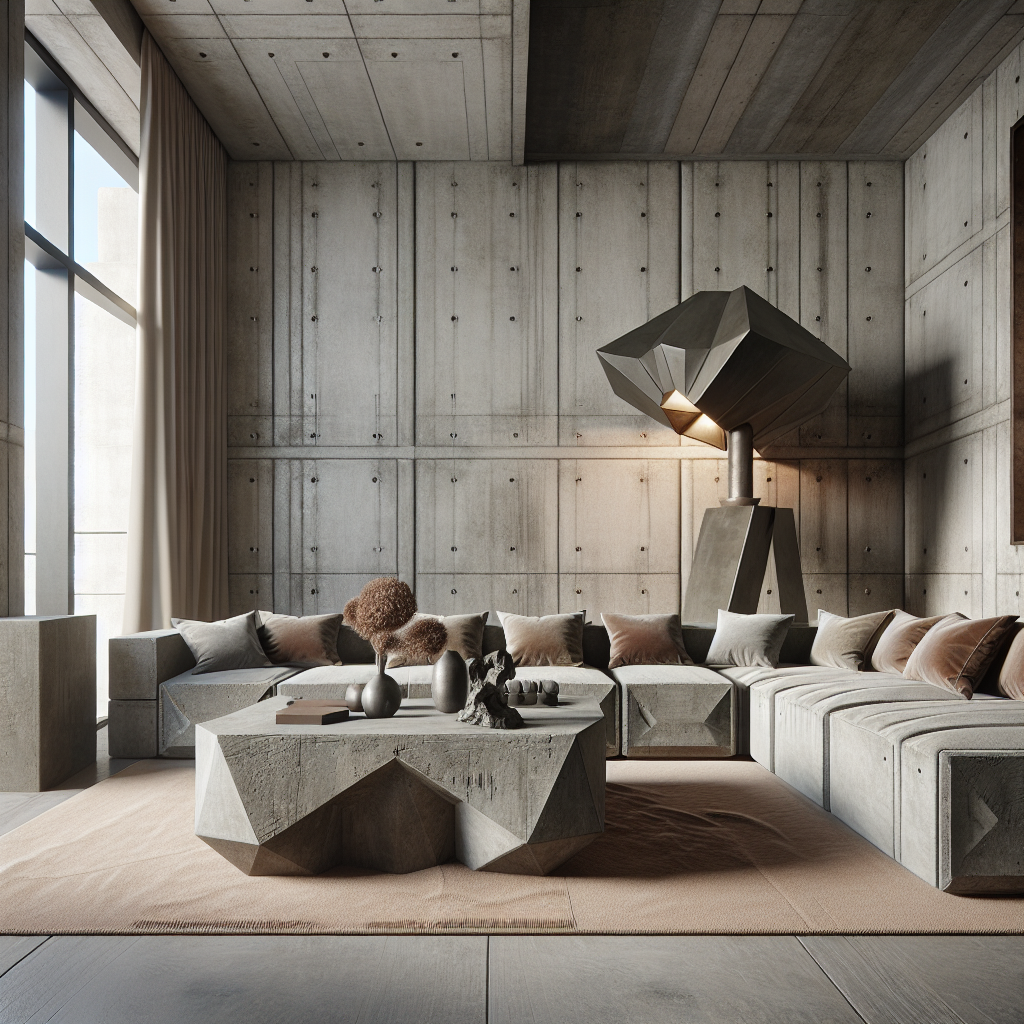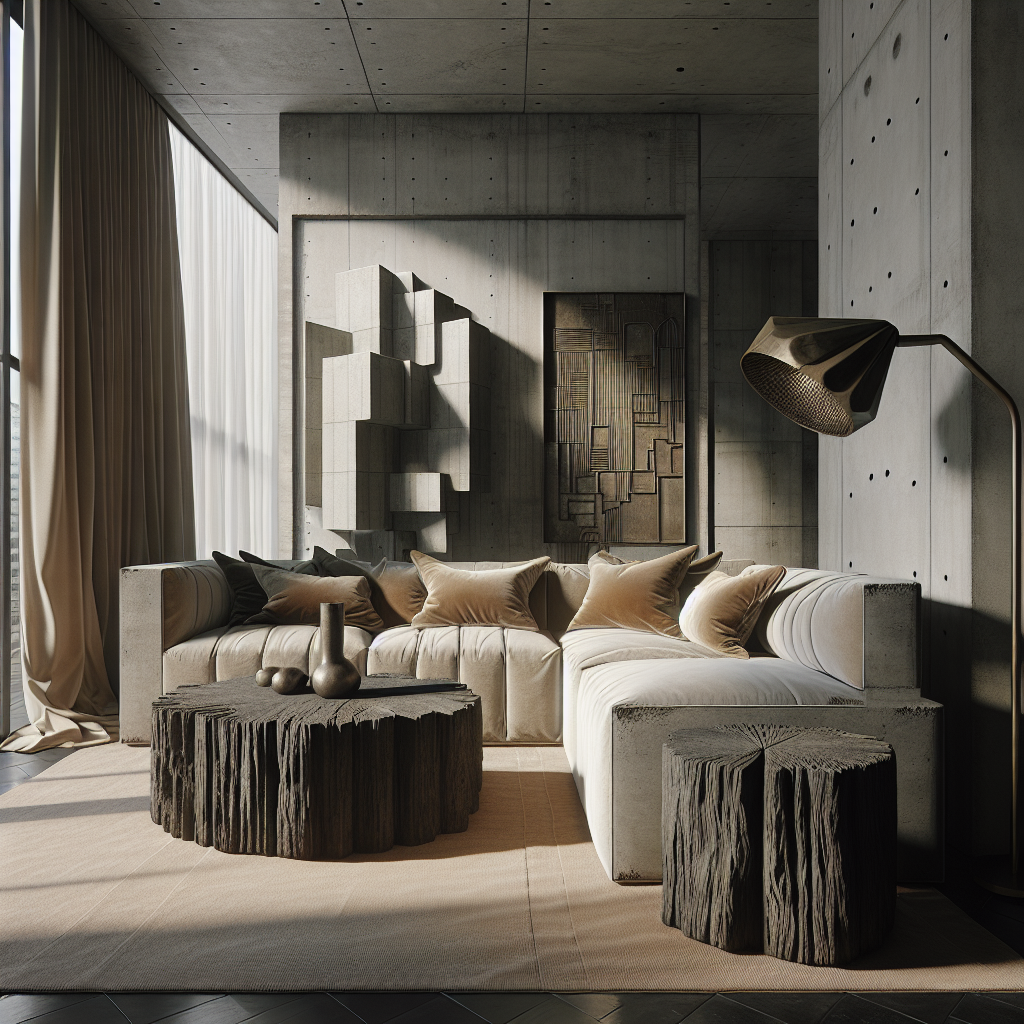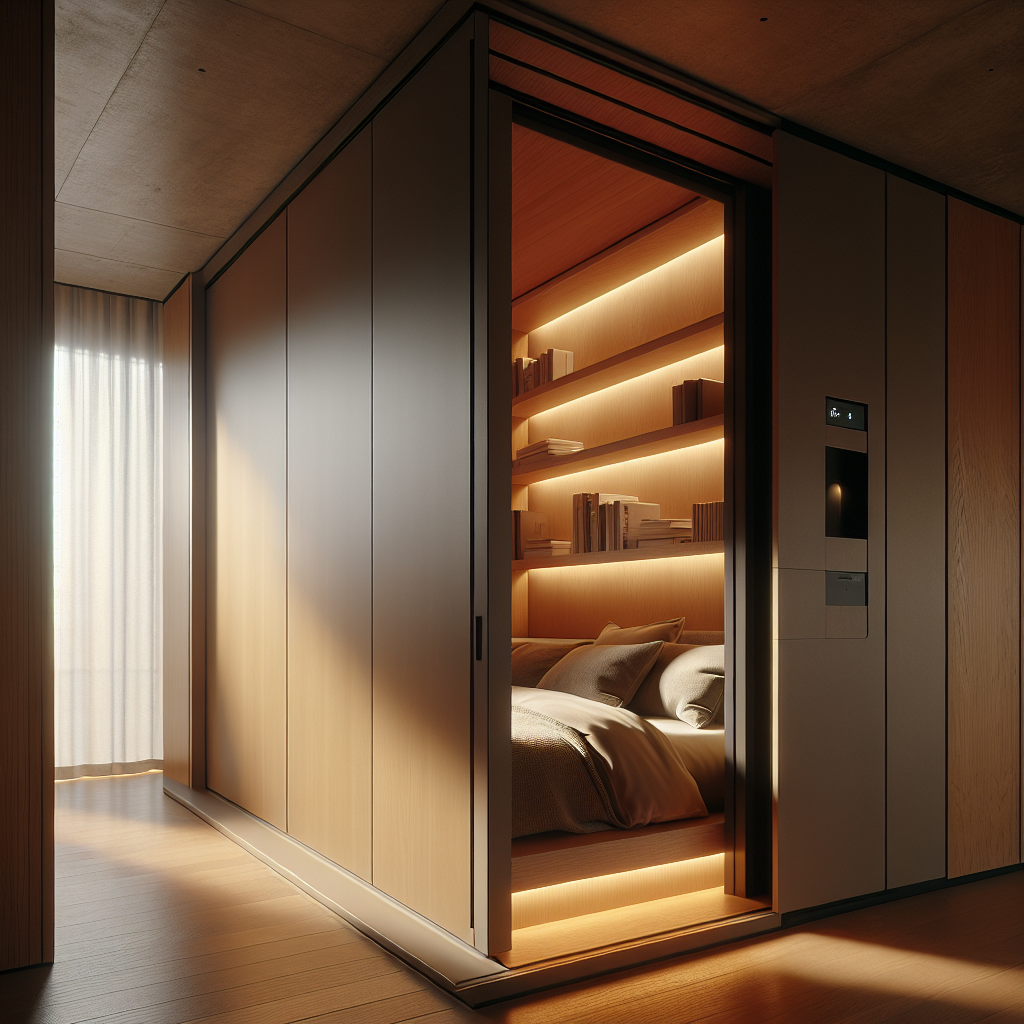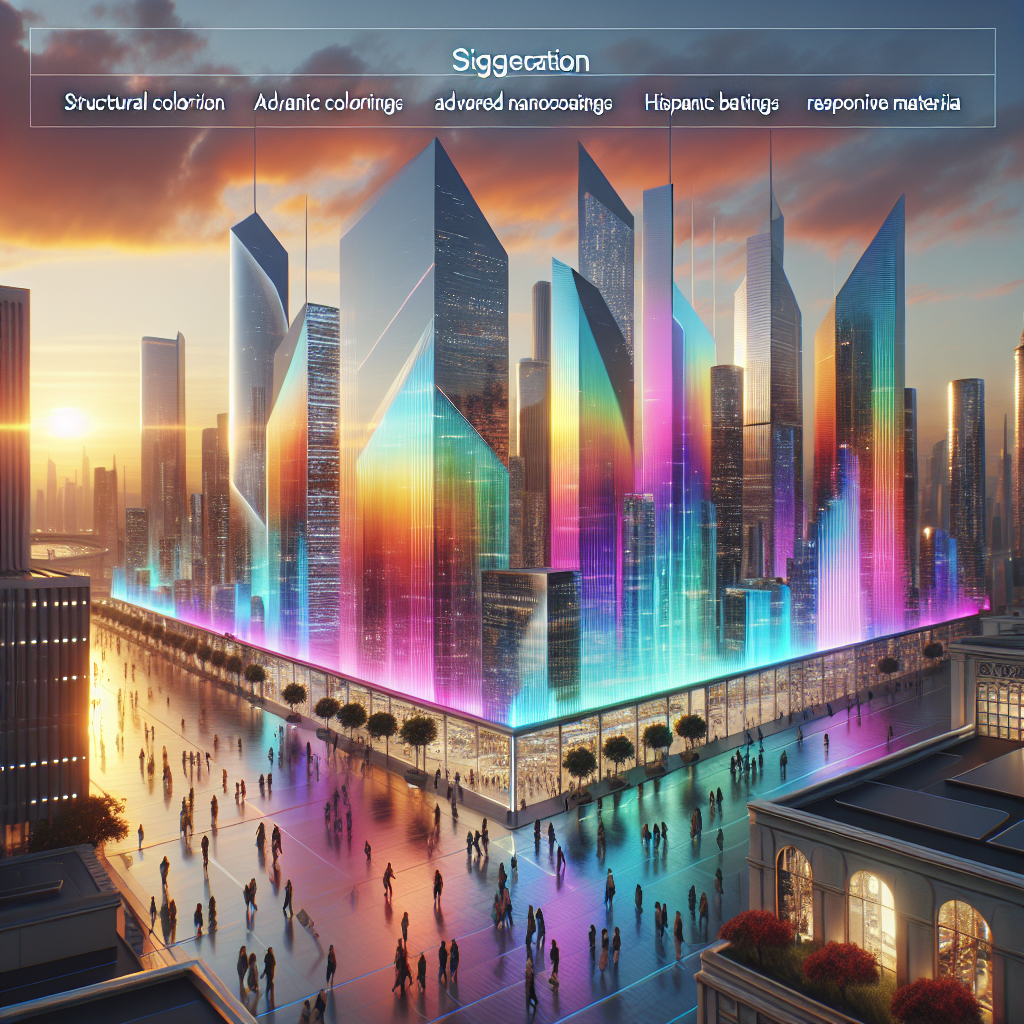Exploring the Influence of Brutalism on Modern Furniture Design
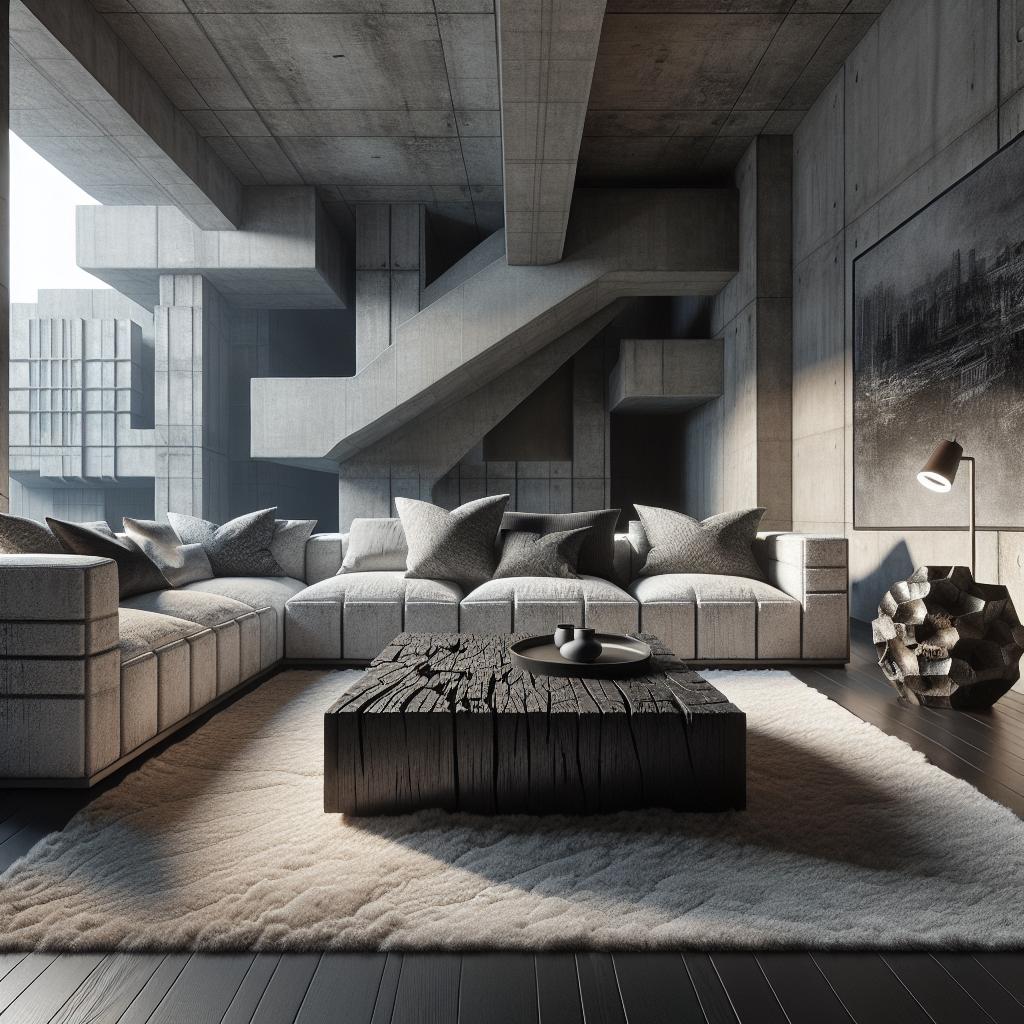
The Resurgence of Brutalism in Modern Furniture Design: A Concrete Influence
Once a polarizing force in the architectural world, Brutalism has made an indelible mark on the landscape of modern furniture design. Known for its raw, unapologetic use of materials and formidable forms, Brutalism has transcended its concrete bounds to inspire a new generation of designers who are reimagining the aesthetic for contemporary interiors.
The term ‘Brutalism’—derived from the French ‘béton brut’, or raw concrete—was coined to describe the stark, geometric structures that emerged in the mid-20th century. While the architectural movement has its roots firmly planted in the ethos of functionality and social utopian ideals, its translation into furniture design has taken a more nuanced turn, marrying the robust with the refined.
Unyielding Forms: The Aesthetic of Brutalist Furniture
The essence of Brutalist architecture, characterized by its fortress-like appearance and monolithic shapes, finds its echo in furniture pieces that exude a sense of permanence and strength. Designers are embracing the raw textures and heavy silhouettes that define Brutalism, yet they are softening these elements to create functional art that is both arresting and accessible.
One cannot discuss the influence of Brutalism on furniture without acknowledging the role of materials. Concrete, steel, and rough-hewn wood become the protagonists in this narrative, with designers sculpting these traditionally austere materials into forms that are unexpectedly elegant and tactile. The result is a collection of pieces that challenge our perceptions of comfort and beauty, much like the architectural movement that inspired them.
Designers at the Forefront: Pioneers of the Brutalist Furniture Movement
The renaissance of Brutalist-inspired furniture can be attributed to visionary designers who dare to reinterpret the principles of the movement. Among them, figures such as Rick Owens and Vincenzo De Cotiis stand out, their work embodying the raw magnetism of Brutalism while pushing the boundaries of form and function. Their creations are not mere replicas of Brutalist architecture but rather evocative translations that capture the spirit of the movement.
In the hands of these modern-day alchemists, the starkness of Brutalism is transformed into objects of desire that speak to a sophisticated audience. Their work, often described as ‘sculptural’ and ‘monumental’, has been featured in trendsetting design articles and has garnered a cult following among design aficionados.
Integrating Brutalism into the Home: A Balancing Act
The integration of Brutalist furniture into the domestic sphere is a testament to the versatility of the movement. While the stark, imposing buildings that define Brutalist architecture may not be universally beloved, the furniture it inspires can add a compelling visual anchor to any space. The key lies in balance—pairing the heavy with the light, the rough with the smooth, to create a harmonious interplay of contrasts.
Interior designers are increasingly incorporating Brutalist pieces as statement items, juxtaposing them with softer textures and organic forms. The result is a layered, dynamic space that tells a story of historical reverence and modern innovation. As explored in interior design trends, the boldness of Brutalist furniture can serve as a focal point, grounding a room with its substantial presence.
Brutalism Beyond Concrete: Exploring Alternative Materials
While concrete remains synonymous with Brutalist architecture, modern furniture designers are exploring a wider palette of materials to convey the movement’s ethos. Metals such as bronze and iron are being cast into rugged forms, while wood is being carved with a deliberate rawness that pays homage to the unrefined beauty of Brutalism.
These materials are not chosen at random but are integral to the narrative of each piece. They evoke a sense of history and permanence, while their malleability allows for innovative expressions of the Brutalist philosophy. The exploration of alternative materials also reflects a growing concern for sustainability, as designers seek to reconcile the movement’s principles with environmentally responsible practices.
The Cultural Resonance of Brutalist Furniture
The resurgence of Brutalism in furniture design is not merely an aesthetic trend but a cultural phenomenon. It reflects a broader societal shift towards authenticity and substance in a world often dominated by the ephemeral. The tactile, grounded nature of Brutalist furniture offers a counterpoint to the digital age, providing a sense of solidity and timelessness.
As we navigate an era of rapid change, the desire for objects that embody durability and resilience becomes ever more pronounced. Brutalist furniture, with its emphasis on materiality and form, resonates with this collective yearning for the tangible. It stands as a reminder of the enduring power of design to shape our environments and our experiences within them.
Conclusion: The Lasting Impact of Brutalism on Furniture Design
The influence of Brutalism on modern furniture design is a dialogue between past and present, a fusion of the monumental and the intimate. It challenges us to reconsider our notions of beauty and comfort, inviting us to embrace a raw, unfiltered aesthetic that is both provocative and profound.
As we witness the evolution of this trend, it is clear that the principles of Brutalism will continue to inspire designers for years to come. Whether through the use of innovative materials, the creation of sculptural forms, or the integration of Brutalist pieces into diverse interiors, the movement’s legacy is cemented within the realm of design. The enduring appeal of Brutalist furniture is a testament to the power of design to transcend its original context and to continually reinvent itself in the face of changing tastes and times.
For those interested in exploring the intersection of architecture and furniture design further, the influence of architecture on furniture provides a rich tapestry of ideas and innovations that continue to shape our living spaces.

